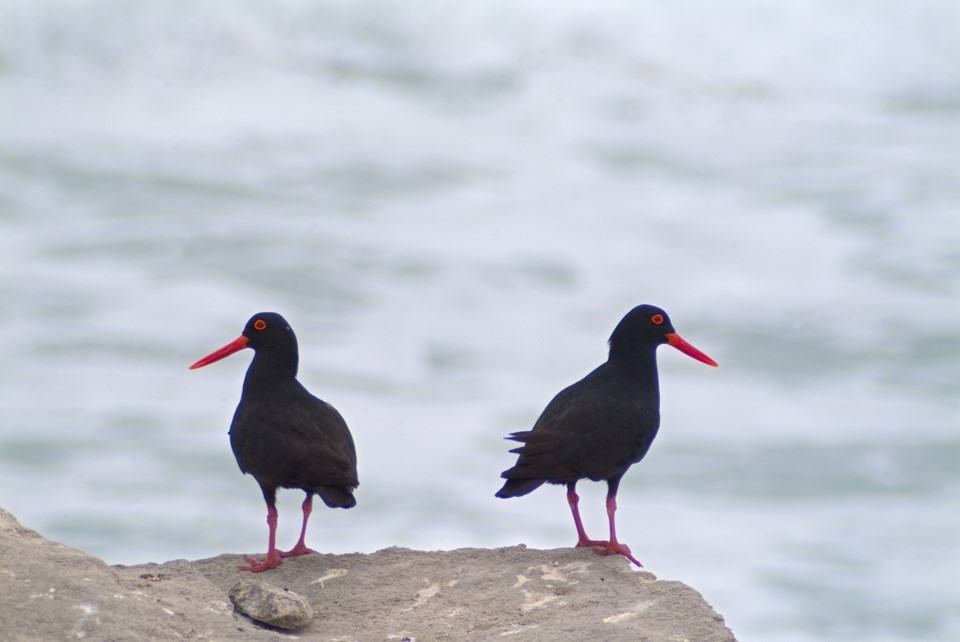I guess the adjective “charismatic” can mean different things to different people but I think there would be wide agreement that among the Sunshine Coast’s bird species, the black oystercatcher qualifies in spades. My personal opinion is that it is hands down our most charismatic species and that it is deserving of being adopted as a logo for the Sunshine Coast. When the signs welcoming travellers to Sechelt are replaced, the oystercatcher should feature prominently as a distinctive and familiar symbol of our area and the interesting wildlife that flourishes here.
Black oystercatchers are a common species along our shorelines and are easily observed, even in high-traffic areas such as Davis Bay and Mission Point. They are quite confiding, allowing relatively close approach but if disturbed they take flight low over the water, uttering a loud, annoyed chatter. Many people, even non-birders, are familiar with our oystercatchers. They certainly stand out, being a crow-sized black bird with a nine-centimetre-long red bill, pink legs and a glaring yellow iris. All in all, they seem designed to attract attention! Black oystercatchers are confined to the Pacific coast of North America from Alaska to Mexico but other oystercatcher species are found almost worldwide, including the American oystercatcher, a black and white bird found on Atlantic coasts. The world population of the black oystercatcher is thought to be about 10,000 individuals. This is a low number for a bird species but there is minimal concern about their viability, as they are spread out in low numbers across a large distance.
Oystercatchers do not really eat oysters, at least locally, but their diet is a variety of intertidal invertebrates including other mollusks such as mussels, barnacles and small crabs.
The Sunshine Coast is one of the best locations to see black oystercatchers and birders from afar visit our area to view this bird and others that inhabit the rocky shorelines of the Pacific coast. Mission Point is the best place to observe them and they can be found here in all seasons except the summer, when they disperse to breed on offshore islands and islets. When the birds are present, there can be as many as 100 individuals either loafing on the gravel or foraging at the water’s edge. The record high count for the species is the 211 counted by Arnold Skei on White Islet on Sept. 30, 2020.
To report your sightings or questions contact [email protected] or 885-5539. Good Birding.




